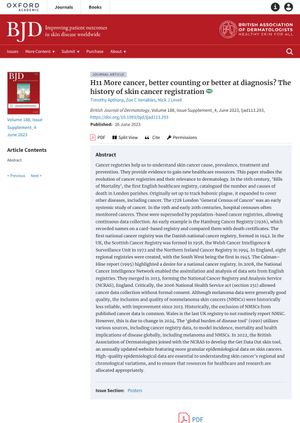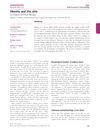More Cancer, Better Counting or Better at Diagnosis? The History of Skin Cancer Registration
June 2023
in “
British Journal of Dermatology
”

TLDR High-quality data on skin cancer is crucial for understanding its trends and allocating healthcare resources effectively.
The paper discusses the history and evolution of cancer registries, with a focus on skin cancer. The first English healthcare registry, 'Bills of Mortality', was established in the 16th century to track the bubonic plague but later expanded to include other diseases, including cancer. The first national cancer registry was the Danish national cancer registry, formed in 1942. In the UK, regional registries were created, with the first being the South West in 1945. These merged in 2013 to form the National Cancer Registry and Analysis Service (NCRAS), England. The paper notes that while melanoma data were generally of good quality, the inclusion and quality of nonmelanoma skin cancers (NMSCs) were historically less reliable, with improvement since 2013. The 'global burden of disease tool' (1990) uses cancer registry data to model disease incidence, mortality, and health implications globally. In 2022, the British Association of Dermatologists joined with the NCRAS to develop the Get Data Out skin tool, an annually updated website featuring more granular epidemiological data on skin cancers. The paper concludes that high-quality epidemiological data are essential to understanding skin cancer’s regional and chronological variations, and to ensure that resources for healthcare and research are allocated appropriately.




